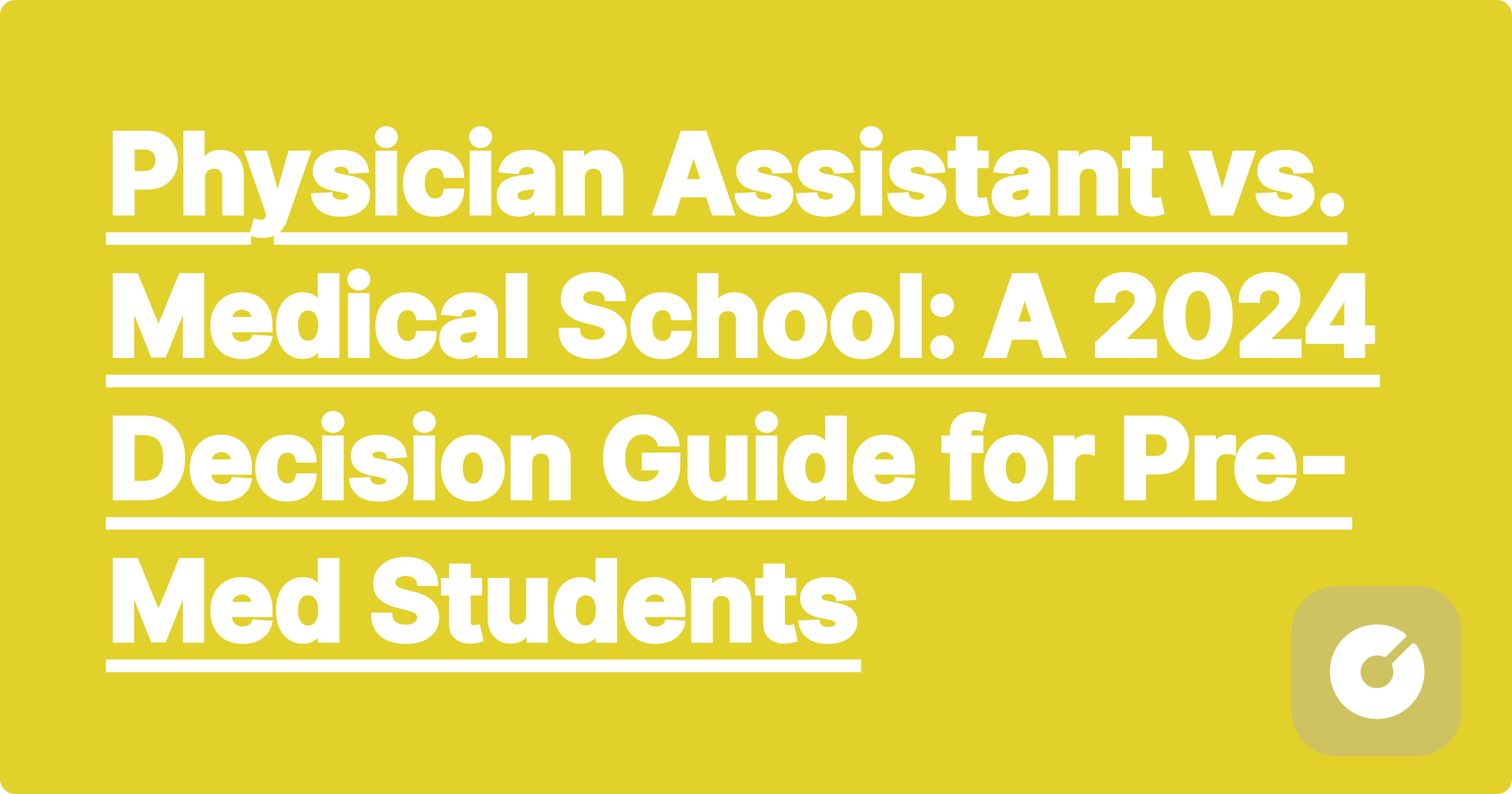
Choosing a career path in healthcare is a significant decision, and for many pre-med students, the choice often boils down to becoming a Physician Assistant (PA) or pursuing medical school to become a physician (MD or DO). Both roles offer rewarding careers dedicated to patient care, but they differ significantly in education, responsibilities, and earning potential. This guide provides a detailed comparison to help you navigate this crucial choice in 2024.
Physicians (MD/DO): Physicians hold the highest level of medical authority. They diagnose and treat illnesses, perform surgeries, prescribe medications, and often lead medical teams. They have extensive training and are responsible for independent medical practice.
Physician Assistants (PAs): PAs work under the supervision of a physician or other licensed healthcare professional. They provide a wide range of medical services, including diagnosing illnesses, ordering tests, assisting in surgery, and prescribing medications (scope of practice varies by state). Their practice is collaborative and supervised.
Prerequisites: Rigorous undergraduate education, typically including strong science coursework (biology, chemistry, organic chemistry, physics). Exceptional MCAT scores are crucial.
Application Process: Highly competitive, involving MCAT scores, GPA, letters of recommendation, personal essays, and interviews.
Duration: 4 years of medical school followed by a residency (3-7 years depending on specialty).
Cost: Tuition, fees, and living expenses can easily exceed $300,000 for the entire process. Student loans are often necessary.
Acceptance Rate (2024 Estimate): Highly variable depending on the school, but generally under 5%. Average GPA and MCAT scores for matriculants are typically above 3.7 and 515 respectively. Top schools may have even higher averages.
Example: The University of California, San Francisco School of Medicine (UCSF) consistently ranks among the top medical schools. Its acceptance rate is typically below 2%, with average GPA and MCAT scores significantly above the national average. Expect competition to be fierce.
Prerequisites: Bachelor's degree in any field; however, a strong science background is highly recommended for success. The GRE (Graduate Record Examinations) is usually required.
Application Process: Less competitive than medical school, but still requires a strong academic record, relevant experience (healthcare volunteering or shadowing are highly beneficial), and compelling personal statement.
Duration: 2-3 years.
Cost: Tuition and fees generally range from $70,000 to $150,000 for the entire program.
Acceptance Rate (2024 Estimate): Acceptance rates vary greatly depending on the program, but generally range from 20% to 60%. Average GPA and GRE scores will vary, but a strong academic record is essential.
Example: Arcadia University's Physician Assistant program is a highly competitive program, yet still often boasts an acceptance rate higher than many medical schools. Reviewing their admissions requirements and average student profiles will give you a better understanding of the expectations.
The key difference lies in the level of autonomy and responsibility. Physicians have the ultimate authority in diagnosing and treating patients, while PAs work collaboratively under physician supervision. The specific tasks a PA can perform vary by state and the supervising physician's preferences.
Both careers offer excellent earning potential. However, physicians generally earn significantly more than PAs.
Physician (MD/DO): The average salary for physicians in 2024 is estimated to be between $200,000 and $500,000+ annually, depending on specialty and experience.
Physician Assistant: The average salary for PAs in 2024 is estimated to be between $110,000 and $150,000 annually, depending on experience, location, and specialty.
The job outlook for both professions is positive, with anticipated growth due to an aging population and increasing demand for healthcare services.
The decision between becoming a PA and pursuing medical school is deeply personal. This guide provides a framework for comparison, highlighting key differences in education, responsibilities, and financial implications. By carefully considering your goals, strengths, and resources, you can make an informed decision that aligns with your aspirations and sets you on a path towards a fulfilling healthcare career. Remember to thoroughly research specific programs and explore all available resources to make the best choice for your future.
Second Career Medical Students: Changing Paths to a Rewarding Career
Foreign Medical Schools for US Students: A Comprehensive Guide for 2024 and Beyond
Osteopathic Medicine: Growing Acceptance and Benefits for Aspiring Physicians
Joint Degree Programs: MD/MBA, MD/JD, MD/MPH – Your Path to a Multifaceted Career in Medicine
State vs. Private Medical Schools: A 2024 Tuition Comparison Guide for Pre-Med Students
Part-Time Work During Medical School: Is It Possible? A Practical Guide for Pre-Med Students
Balancing Relationships During Medical School: A Guide for Pre-Med Students
Medical School Housing: On-Campus vs. Off-Campus – A Comprehensive Guide for 2024 & Beyond
NIH Summer Research Programs for Pre-Med Students: Your Ultimate Guide to Success in 2024
Early Decision Medical School: Weighing the Pros and Cons for 2024 Applicants